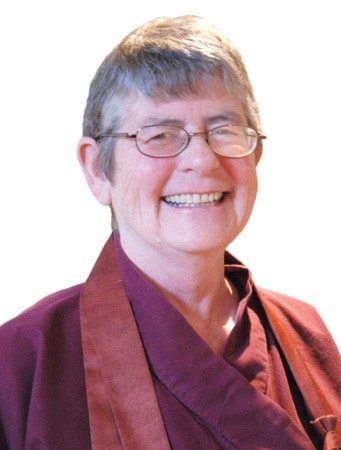In my recent A Zen’s-Eye View columns, I have presented the first five of eight practices of awakening that Buddha taught on his deathbed: 1) have few desires, 2) know how much is enough, 3) enjoy serenity, 4) make diligent effort and 5) remember to be mindful. I repeat these practices to help with the fifth practice of awakening, “Don’t forget to be mindful.” In order be mindful of the practices of awakening, we have to memorize them.
The sixth practice of awakening is to practice meditation so we can live our lives without confusion. We say “practice” meditation, but we must remember that meditation is not a sport like hockey or a skill with a musical instrument. Once the mind has become stable, meditation is the root of a lifestyle that is based in clarity, wisdom and compassion.
The Buddha said, “Monks, if you gather your mind, it will abide in stability. Then you will understand the birth and death of all things in the world. You will continue to endeavor in practicing various aspects of meditation. When you have stability, your mind will not be scattered. It is like a well-roofed house or a well-built embankment, which will help you to maintain the water of understanding and keep you from being drowned. This is called ‘stability in meditation.’ ”
These days, I often hear people confusing meditation with mindfulness. This is a mistake. Even though the two have some similarities, they are not the same. To say they are the same is to say that preparing the soil is identical to eating garden produce. Without soil there are no tomatoes. Without meditation, there is no mindfulness.
Ancient texts from China and Japan make it clear that meditation itself is awakening. It’s not something we do to acquire something else. Lowered blood pressure, clarity of mind and increased awareness are simply side benefits of meditation. But they are not reasons we meditate. When we sit in silent meditation, the old texts say, we are living the life of a Buddhist because we are doing what Buddha did and realizing what Buddha realized.
To meditate is to hear the voice of wisdom within ourselves. Body and mind become clear and we realize the unity of all things. The Buddha sat in meditation for six years, not because he was trying to attain enlightenment, but because he was living in enlightenment. The practice of meditation is not a method for the attainment of realization — it is realization itself, because to maintain meditation is to be constantly alive, awake and aware.
Suggested practice: Set aside half an hour a day for sitting meditation. Sit with an erect spine either on a meditation cushion, a bench or a chair and allow all thoughts and feelings to arise and pass through your mind like clouds passing through an empty sky.
Kuya Minogue is the resident teacher at the Creston Zen centre. She will be offering a beginners’ meditation class at 7-8:30 p.m. Jan 9, 16, 23 and 30. This course is by donation. For more information, contact her at 250-428-6500.
